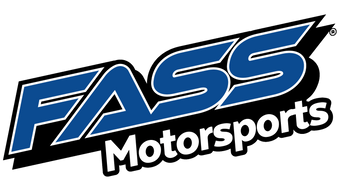If you own a 6.7L or 5.9L Cummins, chances are you’ve heard of a 2nd Gen turbo swap.
This popular upgrade replaces the factory turbo setup with a 2nd Gen-style exhaust manifold and a more traditional turbocharger, typically from the S300 or S400 frame. Enthusiasts love it for improved drivability, lower EGTs, easier turbo serviceability, and more power potential.
But before you dive in, there are 5 key things to consider:
1. Turbo Sizing & Driving Style
The heart of a 2nd Gen swap is choosing the right turbo. Most kits use a BorgWarner S300 or S400 frame turbo, but the exact model (and housing options) should match your truck’s goals:
- S300 frame: Excellent for daily driving, towing, and moderate power builds. Faster spool, great for 500–650 HP setups.
- S400 frame: Ideal for higher horsepower builds (650+ HP) and/or race applications—but usually slower to spool on stock fueling.
Consider how you use your truck. If it tows frequently, a properly matched S300 can transform drivability without excessive lag. If you’re chasing big power, and plan to add bigger injectors/CP3, the airflow of an S400 might be exactly what you need.

2. Tuning Revisions Are Required
A 2nd Gen swap changes how exhaust energy and boost behave compared to stock VGT turbos. For 2007.5+ trucks with electronic VGTs, you’ll need tuning that accounts for:
- VGT codes being disabled or tuned out
- Boost control changes (mechanical wastegate vs electronic vanes)
- Drive pressure vs boost pressure differences
Without proper tuning revisions, drivability will suffer — and check engine lights are almost guaranteed. Be sure to work with a tuner experienced in 2nd Gen swaps!

3. Supporting Mods Matter (Fuel, Manifolds, Oil Lines & More)
Bolting on a big turbo is only part of the equation. A reliable 2nd Gen swap usually involves additional supporting modifications:
- Exhaust Manifold: High-quality 2nd Gen-style T4 or T6 manifolds help optimize flow and reduce cracking.
- Oil Feed & Drain Lines: Correct sizing and routing are essential to avoid oiling issues.
-
Downpipe & Intercooler Piping: Most kits require custom or included piping to route correctly around factory components.
- Head Studs: If you're chasing horsepower, head studs are always a good idea. ARP 625s are the industry standard—and for good reason.
- Fuel System: Especially if you plan on adding larger injectors and CP3, an upgraded lift pump and filtration system like a FASS Fuel System ensures consistent pressure and protects injectors under higher demand.
Skipping supporting parts is one of the most common mistakes people make with these swaps.

4. Budget for the Full Cost (Not Just the Turbo)
Many people look at the price of an S300 or S400 and think a 2nd Gen swap will be cheap. But between the manifold, turbo, downpipe, oil lines, tuning, intercooler piping, gaskets, clamps, and shop labor, costs add up quickly.
If you’re paying for installation, factor in additional hours for fitment and tuning time.
2nd Gen swaps are a do it once, do it right type of upgrade. Cutting corners often leads to fitment issues, poor driveability, and headaches down the line.

5. Know Your Goals & Truck’s Condition
Before you start, take a step back and consider your truck’s overall condition and goals:
- Is the engine healthy (compression, injectors, transmission, head gasket)?
- What horsepower and drivability targets do you have?
- Do you tow often, daily drive, or primarily use it for performance?
Swapping to a big S400 on a stock-fuel, stock-transmission truck can make for a frustrating daily driver. Conversely, a well-matched S300 with good supporting mods can feel like a completely different truck — in the best way.

Where can I buy a 2nd Gen Swap?
While we don't sell 2nd Gen swaps here at FASS Motorsports, some of our favorite brands do—including:
- Smeding Diesel
- Phillips Fab
- Wehrli Custom Fab (5.9 Cummins)
Questions? We’re Here to Help.
- Phone: 636-429-7020
- Email: info@fassmotorsports.com

